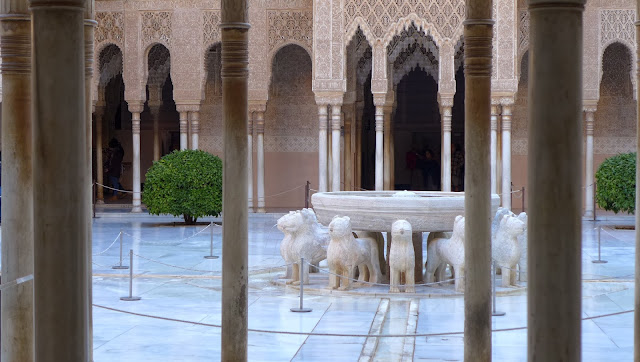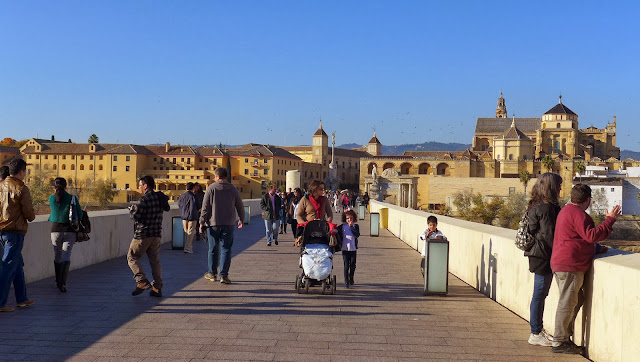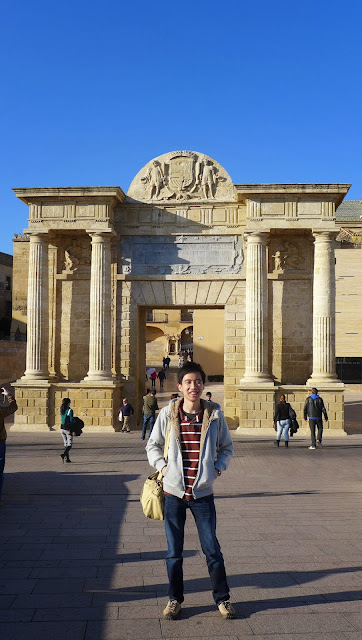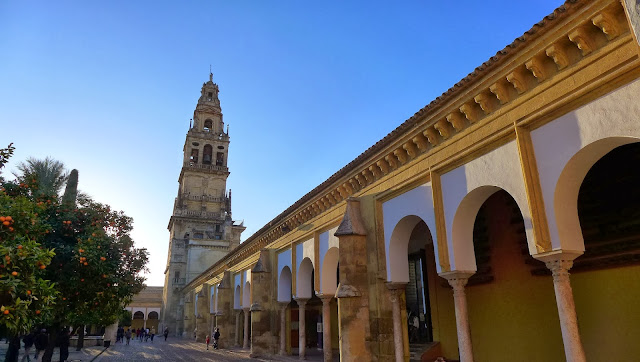Well, Spain has a rich history and a colorful culture which I mentioned in my first post on Day 1 in Barcelona.
Spain has been sought after by many civilizations: the Carthaginians and Romans, the Arabs and lastly the Catholic monarchs. This explains why many cathedral around Spain are Mosque converted Cathedrals.
On Day 4 we visited the Calat Alhambra, a UNESCO World Heritage site. which was an abandoned small fortress rebuilt in the mid 11th century by the Moorish. It was later converted into a royal palace. Beautiful place! Worth every bit of the awful coach ride to Granada!
The Alhambra's Islamic palaces were built for the last Muslim Empire in Spain. It is now one of Spain's major tourist attractions, exhibiting the most significant Islamic architecture together with the Christian building and garden interventions which were added on after Granada was conquered by the catholic monarchs..
The best and most touristy view of Alhambra. Perfect view of the golden structure and it's reflection in the calm pond.
The place is so pretty, we took many hundreds of photos around the compound!

The Alameda de la Alhambra is really a beautiful garden. We enjoyed ourselves very much just wandering around and cam-whoring away! :)
We split ways with the tour group during lunch time and headed for a pizza joint nearby because the other joints were serving paella! Surprisingly, the pizza and red wine tasted so good! Probably because I was really hungry then.
After lunch, we coached to Cordoba to visit the old town. Cordoba is a city in southern Spain and the capital of the province of Cordoba. It was an Iberian and Roman city in ancient times and became a capital of the Islamic Kingdom in the postclassical period (Middle Ages).
The old town of the Cordoba is linked by the Roman bridge which, is thus far, the best walk I ever had via a bridge. The scenery on both side portrait the sights of a peaceful river and were made romantic with the sunset later in the day.
The main attraction in the old town is the Cathedral of Cordoba. The cathedral is also often known as the Mosque of Cordoba - the Mezquita. The Mezquita was used as a Mosque, after the Moorish conquered the Iberian. However, when Cordoba fell to Ferdinand of Castile, the middle of the Mezquita was being tore to make room for the cathedral.
Today, the Mosque remains sublime with most of the interior remain untouched. It is quite an impressive architecture and is unique in its own way with the inter-play of Christian and Muslim cultures in Spain. Its extensive columns and double arches are significant Islamic monuments while the cathedral within and the smaller ones around the compound are the significant Christian's monuments.
After the visit to the Mezquita, we wandered around the old town, which beauty was ruined by the many scammers and beggars around. It was surely not the most pleasant experience having lady beggars with babies trailing you all the way through the main streets; having some fortune lady pestering you to get a stalk of lucky fortune grass from her, etc...Despite the many strange and weird characters wandering on the main streets of Cordoba's old town, I still think that Cordoba is one city worth the visit. :)
At sunset, we crossed the Roman bridge once again to board the coach. The atmosphere and surroundings of the bridge was so romantic! I won't mind walking to and forth with Mr Kwek for another couple of times if time permitted! :)
We coached our way to Seville which turns out to be one of our favorite cities!





















































































No comments:
Post a Comment